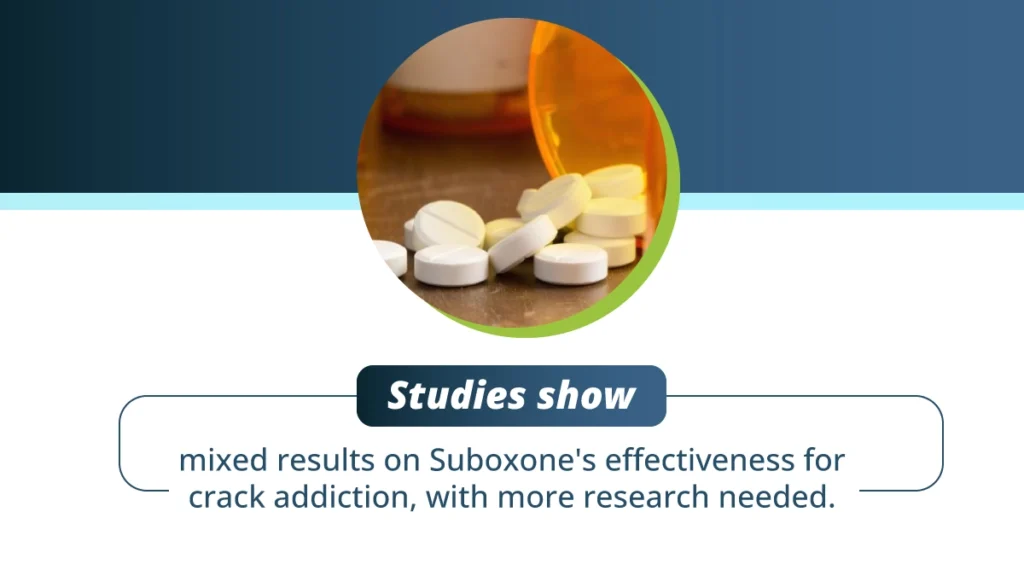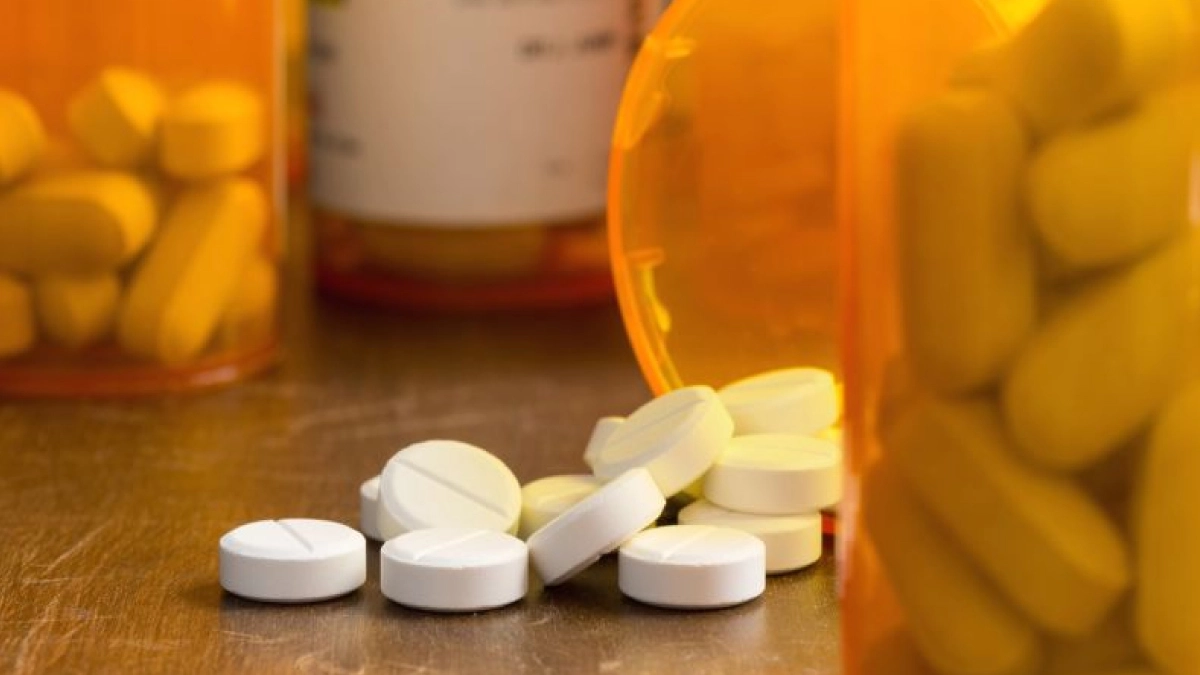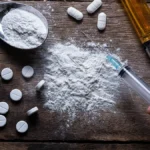Suboxone, a medication primarily used to treat opioid addiction, is being explored for its potential benefits in treating crack cocaine addiction. Crack cocaine, a highly addictive stimulant, poses significant health risks and challenges for those trying to quit.
While Suboxone is not FDA-approved for treating crack addiction, some studies and anecdotal evidence suggest it may help reduce cravings and withdrawal symptoms. In this article, we will examine the effectiveness of Suboxone for crack addiction.
Key Takeaways
Suboxone is mainly used for opioid addiction treatment, but its potential for managing crack addiction is being explored. This article covers:
- Studies on Suboxone for crack addiction show mixed results, with more research needed to confirm its effectiveness.
- Suboxone may reduce withdrawal symptoms and cravings but has side effects and potential for abuse and dependency.
- Other approaches to treating crack addiction may include different medications, therapies, and support services.
If you’re struggling with crack cocaine addiction, contact The Haven Detox-Little Rock at (501) 271-3342 for effective treatment and support.

Understanding Crack Addiction
Crack cocaine is a potent and highly addictive stimulant drug. It is a form of cocaine that has been processed to make a rock crystal, which can be smoked. This method of use allows the drug to reach the brain quickly, producing an intense and immediate high. The effects are short-lived, often leading individuals to take more frequent doses to maintain the high.
The addictive properties of crack cocaine are severe. The drug triggers the release of large amounts of dopamine, a brain chemical associated with pleasure and reward. This creates an intense craving to use the drug again. Over time, the brain’s natural ability to produce dopamine is reduced, making it difficult for users to feel pleasure from everyday activities.
Crack addiction has devastating effects on individuals. It can result in severe health problems, including heart attacks, respiratory issues, and mental health disorders like anxiety and paranoia. Socially, addiction often causes strained relationships, job loss, and financial difficulties. The need to obtain and use the drug can become all-consuming, leading to neglect of personal and professional responsibilities.
Overview Of Suboxone
Suboxone, a prescription medicine, is used to treat opioid addiction. It contains two active ingredients: buprenorphine and naloxone. Buprenorphine, a partial opioid agonist, works by binding to the same receptors in the brain as opioid drugs but does so to a lesser extent, helping to reduce withdrawal symptoms and cravings. Naloxone, an opioid antagonist, is included to deter misuse, as it can precipitate withdrawal if Suboxone is injected.
Approved by the United States Food and Drug Administration (FDA), Suboxone is part of a comprehensive treatment program for opioid use disorder (OUD). Studies have shown its effectiveness in reducing illicit opioid use, improving retention in treatment, and decreasing the risk of overdose-related deaths. It’s typically prescribed in conjunction with counseling and behavioral interventions to address the underlying causes of addiction and support long-term recovery.
While Suboxone is not officially approved for treating crack cocaine addiction, some healthcare providers may consider its off-label use in some instances. This is based on the premise that Suboxone’s ability to alleviate withdrawal symptoms and cravings could potentially benefit individuals struggling with crack cocaine addiction. However, more research is needed to determine its effectiveness and safety in this context.
Suboxone’s Effectiveness In Treating Crack Addiction
Suboxone’s potential effectiveness in treating crack addiction has garnered attention in recent years. Several factors contribute to its possible role in addressing this challenging drug addiction.
Pharmacological Basis
Research suggests that Suboxone’s mechanism of action may extend to crack addiction due to its ability to target the brain’s opioid receptors. By binding to these receptors, Suboxone can help alleviate cravings and withdrawal symptoms associated with crack cocaine use. Additionally, its partial agonist properties may reduce the rewarding effects of crack, making it easier for individuals to abstain from use.
Combination Therapies
Some studies suggest that combining Suboxone with other medications or therapies may enhance its effectiveness in treating crack addiction. For example, prescription medications targeting co-occurring mental health conditions or addressing specific symptoms of crack cocaine withdrawal could complement Suboxone therapy. Additionally, behavioral therapies may further support recovery efforts when used in conjunction with Suboxone.
Clinical Trials
Clinical trials focusing on Suboxone’s effectiveness in treating crack addiction have yielded mixed results. While some trials have shown promising outcomes in reducing cravings and improving treatment retention, others have found limited effectiveness or no significant difference compared to other treatment programs. Factors such as dosing, treatment duration, and patient characteristics may influence trial outcomes.
Remember, while Suboxone shows promise in addressing certain aspects of crack dependence, additional research is necessary to establish its efficacy and guide treatment recommendations.
Benefits Of Using Suboxone For Crack Addiction
Crack addiction can be incredibly challenging to overcome, but Suboxone may offer several benefits in the treatment process, such as:
Reduction Of Withdrawal Symptoms
When someone stops using crack cocaine, they often experience withdrawal symptoms like intense cravings, anxiety, irritability, and fatigue. Suboxone can help alleviate these symptoms by targeting the same brain receptors affected by crack cocaine but in a less intense way. This can make the detoxification process more manageable and increase the likelihood of successfully quitting crack.
Lowering Cravings
Another significant benefit of Suboxone is its ability to lower cravings for crack cocaine. Cravings are a major challenge in addiction recovery, often leading to relapse. Suboxone helps to stabilize brain chemistry, reducing the intense urge to use crack. By lowering cravings, individuals are better able to focus on their addiction recovery and avoid the temptation to use the drug.
Psychological Support
Suboxone treatment often includes psychological support in the form of counseling or behavioral therapy. This holistic approach addresses the root issues contributing to crack addiction, such as trauma, stress, or co-occurring mental disorders. By combining medication with therapy, individuals can develop coping strategies, improve self-awareness, and build a strong support network.
Despite these benefits, it’s essential to approach Suboxone use for crack addiction with caution and as part of a comprehensive addiction treatment plan.
Drawbacks Of Using Suboxone For Crack Addiction
Using Suboxone for crack addiction treatment comes with certain drawbacks that need to be considered. These drawbacks may include:
Side Effects
Like any other medication, Suboxone can cause side effects. Common side effects may include nausea, headache, dizziness, and constipation. Some people may also experience more severe side effects, including respiratory depression or allergic reactions. While these side effects are usually manageable, they can impact a person’s quality of life and may require medical attention.
Potential For Abuse
While Suboxone is designed to help individuals overcome addiction, there is a high potential for abuse. Some individuals may misuse Suboxone by taking higher doses than prescribed or using it in ways other than intended, such as crushing and snorting the tablets. This misuse can contribute to serious health risks and undermine the effectiveness of treatment.
Dependency Concerns
Dependency on Suboxone is another drawback to consider. While the medication can help individuals taper off opioids and manage cravings, there is a risk of becoming dependent on Suboxone itself. Some individuals may find it challenging to stop taking the medication once they no longer need it, leading to prolonged use and potential withdrawal symptoms when discontinuing.
Given these drawbacks, individuals with crack addiction should explore evidence-based treatment options tailored to stimulant use disorder.
Alternative And Complementary Approaches
When it comes to treating crack addiction, Suboxone is not the only option available. Several other approaches can be effective in supporting recovery, including:
Other Pharmacological Treatments
In addition to Suboxone, other pharmacological treatments can be used to manage crack addiction. These may include prescription drugs that help reduce cravings, alleviate withdrawal symptoms, or address co-occurring mental issues. Examples include antidepressants, antipsychotics, and medicines that target specific neurotransmitters involved in addiction, such as naltrexone and topiramate.
Behavioral Therapies and Counseling
Behavioral therapies and counseling play a vital role in crack addiction treatment. These approaches help individuals identify and change unhealthy thought patterns and behaviors associated with drug abuse. Cognitive behavioral therapy (CBT), contingency management (CM), and motivational interviewing (MI) are some examples of effective therapeutic approaches for addiction.
Family Therapy and Support Services
Family therapy and support services can be invaluable in helping individuals recover from crack addiction. Family therapy aids in improving communication and relationships within the family unit, addressing underlying issues that may contribute to addiction. Support services such as peer support groups and sober living environments provide ongoing encouragement and accountability to those in recovery.
Holistic Approaches to Recovery
Holistic approaches to recovery focus on treating the whole person—mind, body, and spirit. These approaches may contain practices such as mindfulness meditation, yoga, acupuncture, and art therapy. Holistic therapies promote overall well-being and can complement traditional addiction treatment methods by reducing stress, promoting relaxation, and fostering self-awareness.
Healthy Lifestyle Changes
Making healthy lifestyle changes is essential for supporting recovery from crack addiction. This includes adopting a balanced diet, getting regular exercise, prioritizing sleep, and avoiding other substances of abuse. Engaging in meaningful activities, pursuing hobbies, and building a supportive social network can also lead to overall well-being and resilience in recovery.
Remember, each person may respond differently to these approaches, so it’s essential to tailor treatment plans to individual needs and preferences.
Frequently Asked Questions (FAQs)
What is the role of Suboxone in treating crack addiction?
Suboxone’s role in treating crack addiction is not fully established but is being explored. It may help by reducing cravings and withdrawal symptoms, similar to its effects on opioid addiction. However, Suboxone is not specifically approved for crack addiction treatment, and its use in this context is considered off-label. Its efficacy may vary based on individual factors, and it should be used as part of a comprehensive treatment plan that includes counseling and support services.
How effective is Suboxone in managing withdrawal symptoms in crack-dependent individuals?
The effectiveness of Suboxone in managing withdrawal symptoms in crack-dependent individuals is not well-established. While Suboxone is primarily used for opioid dependence and addiction, some studies suggest it may help alleviate certain withdrawal symptoms associated with crack cocaine use.
However, its efficacy can vary depending on factors like the severity of addiction and individual response to treatment practices. Further research is needed to determine its specific role in managing crack withdrawal symptoms.
Can Suboxone help with other addictions?
Suboxone, primarily used for opioid and opiate addiction, can also aid in treating other substance use disorders (SUDs). Its components, buprenorphine and naloxone, alleviate withdrawal symptoms and cravings. While not a cure-all, it can support recovery from substances like alcohol or stimulants.
However, it requires careful monitoring and should be part of a comprehensive treatment plan that may include therapy and lifestyle changes. Always consult a healthcare professional for personalized advice on addiction treatment options.
Embrace Wellness At The Haven Detox-Little Rock
Are you struggling with cocaine use disorder? You’re not alone, and it’s never too late to seek help. At The Haven Detox-Little Rock, our team of medical professionals is here to support you on your path to recovery.
Our comprehensive services begin with a medical detox program to safely cleanse your body of harmful toxins. Following detox, our residential rehab program offers 24/7 intensive care. Here, you will benefit from therapy sessions, effective medication management, NAD IV therapy, holistic approaches, and more, all designed to help you overcome addiction.
Take control of your life today. Contact us at (501) 271-3342 for detailed information about our programs and start your journey to a healthier, happier future.




